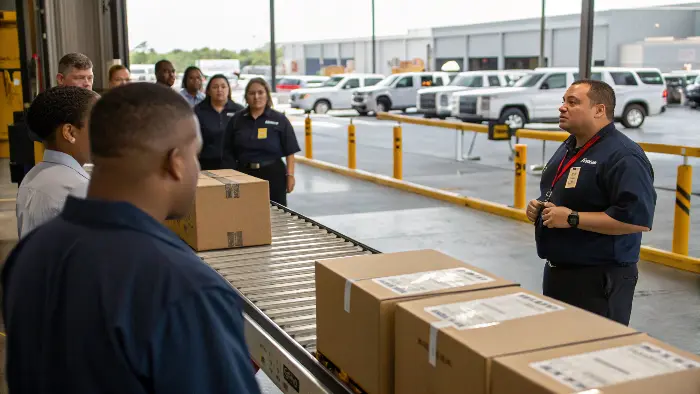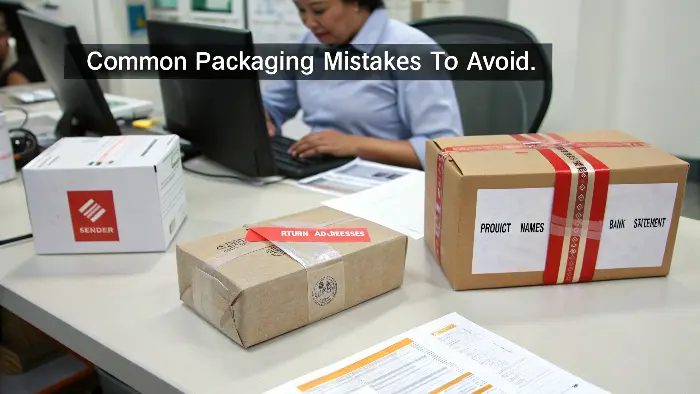Worried your customers’ private purchases might be exposed? Embarrassing deliveries can kill trust. This guide shows you how to master discreet packaging.
Discreet packaging for adult products means shipping items in plain, unmarked boxes or mailers with neutral return addresses and generic shipping labels. The goal is complete privacy from order to delivery, protecting your customer’s confidentiality.
I’ve been in this industry for a while now, both as a manufacturer with PrivyPlay and seeing what works (and what really doesn’t!) for brand owners. Protecting customer privacy isn’t just a nice-to-have; it’s fundamental. If your customers can’t trust you to be discreet, they’ll go elsewhere, plain and simple. So, let’s dig into how you can make sure your packaging is as private as Fort Knox, keeping your customers happy and coming back for more. Stick with me, and I’ll walk you through the essentials.
Why is Privacy So Dang Important for Adult Product Packaging Anyway?
Ever had that heart-stopping moment when a package arrives, and you just know everyone can guess what’s inside? It’s a major turn-off for customers, especially with sensitive items. We need to avoid that at all costs.
Privacy in adult product packaging is vital because it builds customer trust and protects them from potential judgment or embarrassment. It ensures a comfortable and safe purchasing experience, encouraging repeat business and positive brand perception. It’s non-negotiable, really.
You know, it sounds obvious, right? Privacy is important. But let’s break down why it’s so absolutely critical in our line of work. When someone buys an adult product, it’s a personal, often intimate, decision. The last thing they want is their nosy neighbor, their delivery driver, or even someone in their own household getting a hint of what they’ve ordered. Think about it – a package arrives with a suggestive company name or a return address that screams "adult toys." Boom! Instant awkwardness, and potentially worse. I’ve heard stories from brand owners about customers being mortified, and it’s a quick way to lose someone forever.
For us at PrivyPlay, and for any brand owner I work with, this is a cornerstone of our business. It’s not just about avoiding a bad review; it’s about respect. Respect for the customer’s choices and their right to keep those choices private. When you nail discreet packaging, you’re sending a powerful message: "We get it. We value your privacy. You can trust us." This trust is the bedrock of customer loyalty. People will remember the brands that made them feel safe and respected. Plus, let’s be honest, in some communities or living situations, a lack of discretion can lead to genuine social or personal difficulties for the customer. We’re not just selling products; we’re providing an experience, and that experience needs to feel secure from the moment they click "buy" to the moment they unbox their purchase. It’s a responsibility we can’t afford to mess up. It’s also a legal thing in some places, believe it or not – data protection and privacy laws can sometimes extend to how you handle physical shipments if they reveal sensitive personal information. So yeah, it’s a big deal.
What are the Absolute Must-Haves for Truly Discreet Outer Packaging?
Thinking any brown box will do? Not quite. Customers are savvy and can spot tell-tale signs. Let’s make sure your outer packaging is truly incognito, like a secret agent of satisfaction! 😉
Truly discreet outer packaging uses plain, unmarked boxes or padded envelopes. It features a generic, non-descriptive sender name (like a fulfillment center or a neutral business name) and a non-revealing return address. No logos, no suggestive words, nothing!

Alright, let’s get down to the nitty-gritty – the actual physical packaging. This is where the rubber meets the road, or rather, where the box meets the doorstep. I always tell my clients at PrivyPlay that the goal here is for the package to be utterly boring. So boring, in fact, that no one gives it a second glance.
First up: The Box or Mailer Itself.
Always, and I mean always, use plain, unbranded corrugated boxes or opaque padded mailers. No flashy colors, no patterns, and definitely no company logos or product names on the outside. Brown or white is your best friend here. The material should also be sturdy enough to protect the contents without hinting at what’s inside through its shape. I’ve seen some brands try to get clever with custom-shaped boxes to reduce shipping costs, but if that shape is too unique and starts to mimic the product inside, well, you’ve failed at discretion.
Next: The Shipping Label.
This is critical.
- Sender Name: Never use your brand name if it’s obviously related to adult products. Use a generic fulfillment company name, an innocuous parent company name, or even initials. Something like "Shipping Department," "Logistics Center," or "S.P. Enterprises" works wonders. I remember one time, early in my career, a client used "Pleasure Pack Inc." as their sender name – can you imagine the looks?! We fixed that fast.
- Return Address: Similarly, the return address should be a PO Box or a generic business address that doesn’t scream "adult novelties."
- Product Description (if required by customs/carrier): Keep this as vague and neutral as legally possible. "Personal accessory," "novelty item," or "silicone sculpture" are often acceptable, depending on regulations. Check with your carrier for what’s permissible.
Finally: Tape and Seals.
Use standard packing tape. Clear or brown. No custom-printed tape with your logo or brand name, please! The idea is to make it look like any other package someone might receive. Some brands like to add a tamper-evident seal for security, which is a good idea, but make sure that seal itself is also discreet.
It’s all about creating an exterior that gives away nothing. The customer should be the only one who knows the delightful secret hidden inside. When we design packaging solutions for PrivyPlay clients, these are the non-negotiables we start with.How Can We Make Sure Confidentiality is King Throughout the Shipping Process?
Packaging is just one piece. What about the journey from your warehouse to their door? Loose lips sink ships, or in our case, customer trust. Let’s seal those leaks!
Ensure confidentiality by training staff on privacy protocols, using discreet billing descriptors, and choosing reliable shipping carriers who understand the need for discretion. Clear internal policies and secure data handling are also key for trust.

So, you’ve got the perfect, boring-looking box. Awesome! But discretion doesn’t stop there. The entire fulfillment and shipping process needs to be buttoned up tight to protect customer confidentiality. I’ve seen perfectly packaged items get compromised by a slip-up elsewhere in the chain.
First, let’s talk about Internal Processes and Staff Training.
Everyone in your fulfillment chain, from warehouse packers to customer service reps, needs to understand the importance of discretion. This means:
- Order Processing: No shouting out customer names or order details in the warehouse. Keep printed order sheets secure and dispose of them properly.
- Customer Service: If a customer calls with a query, staff should be trained to verify identity carefully before discussing order details. And, of course, they should maintain a professional and discreet tone.
- Data Security: Customer data (names, addresses, purchase history) must be stored securely. This is a huge one. A data breach is a nightmare for any business, but for an adult product brand, it can be catastrophic. We at PrivyPlay take this incredibly seriously, and so should every brand.
Next up: Billing Descriptors.
This is a classic mistake I see. The charge on the customer’s credit card statement should be as discreet as the packaging. "PrivyPlay Pleasure Emporium" is a no-go. Instead, use a generic business name or your parent company’s name. Something like "PPY Commerce," "Willow Creek Goods," or "Online Merchant Services" is much better. Test this yourself! Place an order and see what shows up on your statement. This little detail makes a huge difference to customer peace of mind. I remember a client who lost a bunch of customers because their billing descriptor was too obvious – ouch!
And then there’s Choosing Your Shipping Carrier.
While most major carriers are generally professional, it’s worth having a conversation with your account manager about your needs. Some carriers might offer additional services or have protocols that align better with discreet shipping. Ensure they don’t slap on any extra stickers or branding that could compromise privacy. Also, consider tracking options. Good tracking allows the customer to anticipate delivery and secure the package promptly, minimizing the chances of it being seen by others.
Finally, Return Processes.
If a customer needs to return an item, the process should also be discreet. Provide clear instructions and perhaps even a pre-paid, discreet return label if feasible.
It’s about creating a complete bubble of confidentiality around the entire transaction. Every touchpoint matters.What are Some Common Oopsies to Sidestep in Discreet Packaging?
We all make mistakes, but some are costlier than others in this biz. Avoiding common packaging blunders can save you from red-faced customers and lost sales. Let’s learn from others’ slip-ups!
Common mistakes include using branded tape, revealing sender names or return addresses, flimsy packaging that hints at the contents, or product names on customs declarations. Also, an obvious billing descriptor on bank statements is a big no-no.

Over the years, working with countless brands at PrivyPlay, I’ve seen a few recurring mistakes when it comes to discreet packaging. It’s often the little things, the details that get overlooked, but these can make all the difference. Avoiding these common pitfalls is key to maintaining that crucial customer trust.
- Branded Everything: This is probably the most frequent offender. I’m talking branded packing tape, boxes with subtle (or not-so-subtle) logos, or even shipping labels that clearly state "XYZ Adult Toys." Remember, the goal is boring. Any branding on the outer package is a dead giveaway. I once saw a company use bright pink bubble wrap internally, which, while cute for the unboxing, could sometimes be visible if the outer box got damaged slightly. Stick to plain.
- Revealing Sender Information: As mentioned before, your company name on the return address or sender field can be a major privacy breach. If your brand name is "Sensual Secrets," that’s a problem. Always use a neutral alias. A friend in the industry told me about a time their fulfillment center accidentally defaulted to using the brand’s very obvious name for a batch of shipments. The customer service nightmare that followed was… intense.
- Inadequate Packaging Material: Using flimsy boxes or mailers that can easily be damaged or conform to the shape of the product inside is a big no. If someone can tell it’s a vibrator just by the outline of the package, you’ve failed. The package needs to be sturdy and generic in shape.
- Descriptive Customs Declarations: For international shipping, you have to declare contents. But "Realistic Dildo, 8-inch" is not the way to go. Use generic terms like "silicone novelty," "personal massager," or "health aid," as permitted by customs regulations in both the origin and destination countries. Always check what’s acceptable; don’t just guess.
- Compromised Internal Packaging: While the focus is often on the outer box, if the internal packaging (like the product’s actual retail box) is flimsy and rattles around, it could get damaged and potentially reveal contents if the outer box is also compromised. Ensure secure internal padding.
- Forgetting the Billing Statement: This isn’t strictly "packaging," but it’s part of the overall discreet experience. A charge appearing as "PassionPlaythings Inc." on a credit card statement can cause just as much trouble as a loud package. This is a classic, and surprisingly common, oversight.
Avoiding these "oopsies" isn’t rocket science; it just requires attention to detail and putting yourself in your customer’s shoes. Think: "Would I feel comfortable receiving this package?" If the answer is anything less than a resounding "yes," it’s time to reassess.Conclusion
Mastering discreet packaging isn’t just good business; it’s about respect. Prioritize plain packaging, neutral sender details, and confidential processes. Your customers will thank you with their loyalty. Build that trust, one boring box at a time! 😉
